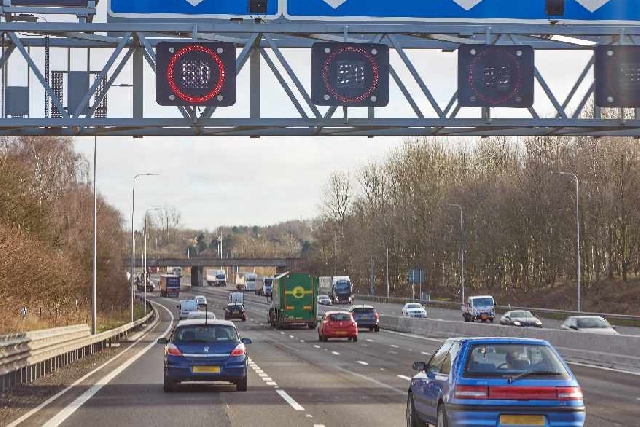Campaigners claim the M60 and M62 are more dangerous since the introduction of the smart motorway
Date published: 12 February 2019

Smart Motorway in Greater Manchester
MP's are calling for a review of smart motorways like the ones installed on the M60 and M62 after campaigners claim they're just not safe.
The road management system was installed to help reduce congestion and took four years to complete opening last July, costing around £208m.
It works by making the hard shoulder a lane during busy periods and if a break-down occurs then displaying a red X above it warning of the issue ahead.
However, campaigners say this is dangerous for drivers and road workers.
Conservative MP Mike Penning is heading the All-Party Parliamentary Group for Roadside Rescue and Recovery: "I was the Minister that rolled them out. At the time, I looked for the evidence as to whether they were safe or not.
"The 'safety areas' - where drivers can pull into - were originally tested at around 500-600 metres, but now they're up to a mile apart, sometimes more. Clearly there is a problem out there and I don't think they should continue to be rolled out.
He continued: "The pilot schemes were done with much shorter zones and there is no proper evidence showing how many people are ignoring the red crosses. We know the minimum amount of people who are being killed, but we don't have figures for the number of people seriously injured on smart motorways".
Highways bosses insist they're safe though with a spokesperson saying:
“We welcome the establishment of the new All Party Parliamentary Group on Roadside Rescue and Recovery and have already actively engaged with key members to arrange meetings in the coming weeks.
Smart motorways are good for drivers; they add extra lanes giving extra space so more people can travel, they use technology which makes journeys more reliable and evidence proves they are as safe as traditional motorways, which are already among the safest roads in the world. Feedback from road users show the majority feel confident driving on a smart motorway, and that they are safer and improve journey times.
“We recognise that as well as being safe, drivers want to feel safe and we have and will continue to make some changes to the design of motorways. This includes making emergency areas more visible (M1, M3 and M5); introducing systems that detect stationary vehicles; and raising awareness of the need to comply with lane closures. For future schemes we will be reducing the maximum space between emergency areas to one mile, where practical. All of this is being done to help road users feel safer.”
Most Viewed News Stories
- 1Changes to Oldham regeneration project will cost additional £7m
- 2Controversial scheme on greenbelt given planning permission
- 3A third of Oldham is worse off than six years ago, say government statistics
- 4A ten-year-old child was hospitalised due to ‘potentially life-threatening’ neglect
- 5Oldham charity which has helped 20,000 families up for national accolade




